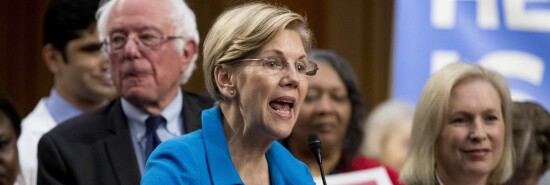
The false dichotomy of the dual mandate and the Phillips curve
Tiana Lowe Doescher
Video Embed
For a second consecutive month, the unemployment rate has fallen, this time to the near 54-year low of 3.5%. Despite the Federal Reserve tightening interest rates at the fastest clip in 40 years, the labor force participation rate has plateaued at 62.6% for a fifth month in a row. The numbers tell a very clear story. Despite the fulmination of pro-inflation Democrats like Sens. Elizabeth Warren (D-MA) and Bernie Sanders (I-VT), the Phillips curve positing a trade-off between unemployment and inflation is a false dichotomy in the long run, especially in an aging economy stagnated by a bloating welfare state like ours.
Contrary to self-serving narratives that millennials triggered a “Great Resignation,” the labor force participation rate for adults 25 through 54 has rebounded past the pre-COVID peak to the highest point in more than 16 years. And despite claims that the economy has left prime-aged men behind, only about 1 in 10 men aged 25 through 54 is out of the labor force. (For women, the figure is 1 in 5.)
BIDEN, FINALLY, MAKES RIGHT CALL ON SPACE COMMAND
The real crisis has been caused by those older than 55, 1 in 3 of whom are working or looking for a job. And it’s not purely a result of demographic change. Fewer than 2 in 3 adults aged 55 through 64 — before the official American retirement age — have a job or are looking for one. Fewer than 1 in 5 seniors over 65 have a job or are looking. Even among those seniors with no disability, just 1 in 4 are in the labor force.
For a year now, Warren and company have blasted Jerome Powell for finally refusing to finance the federal government’s COVIDiocy, thanks to the progressive penchant for inflating the paychecks of the working class as a secondary tax. But the data simply has not born out the expectations of either Warren or Powell, who similarly expected an uptick in unemployment, though he correctly considered that a worthy cost to restore price stability.
The Phillips curve informs the Fed’s congressionally imposed dual mandate, which legally requires the Fed to balance price stability with “full employment.” In the short run, these elements are sometimes in competition, but not in an economy as odd as ours.
Let us start with a simple observation: the welfare state is contingent on an expanding population. The problem is, however, our population has stopped expanding. Long before COVID, the number of workers funding each retiree was trending downward, but Uncle Sam’s pandemic era spending spree exploded asset bubbles across the economy, with inflated home prices allowing boomers to retire even earlier than they had originally planned. This compounded two problems: the obvious imbalance of more workers draining Social Security with fewer contributing and the quieter issue of decreased labor supply meeting inflated demand.
CLICK HERE TO READ MORE FROM THE WASHINGTON EXAMINER
The Fed’s internal unemployment rate projections were never quite as high as, say, that of Larry Summers, but even the central bank never assumed that so many older adults would remain out of the workforce. Recall that the unemployment rate is the ratio of those who do not have jobs divided by the sum of those who have jobs or are looking for them. Because that denominator has remained so much lower than economists have expected, the unemployment rate continues to come in below expectations, even when overall job growth also comes in below expectations.
When the requisite proportion of workers to fund a welfare state are competing for jobs, jacking up borrowing costs would result in substantially more people looking for work than there are job openings. But more than a decade of quantitative easing and seigniorage warped an economy already pushed to the brink by boomers.
